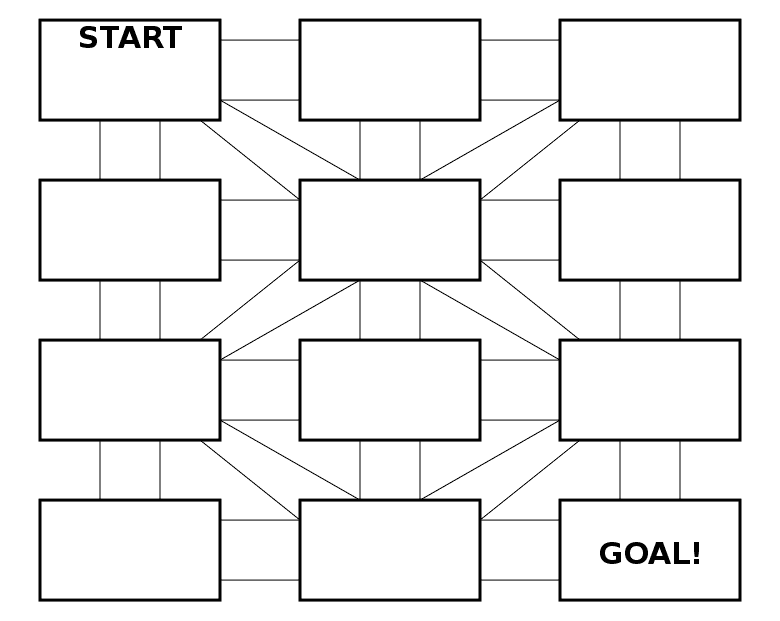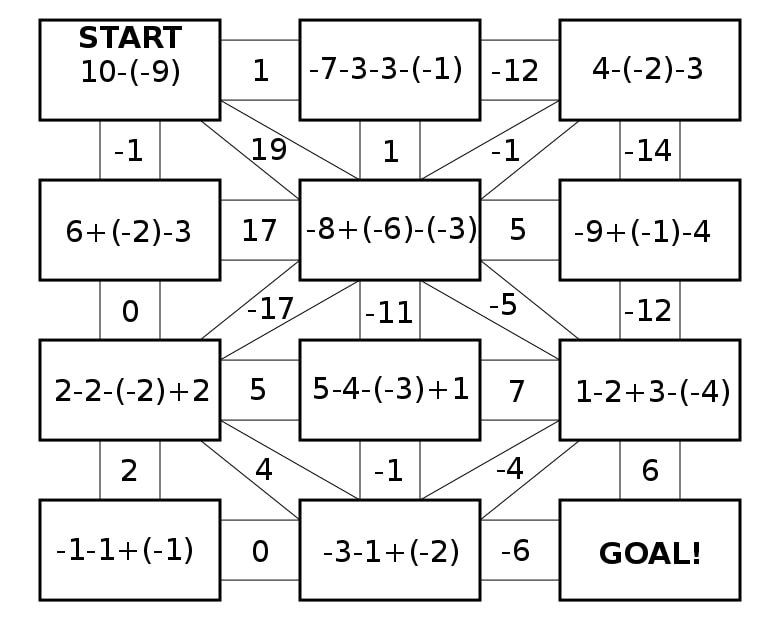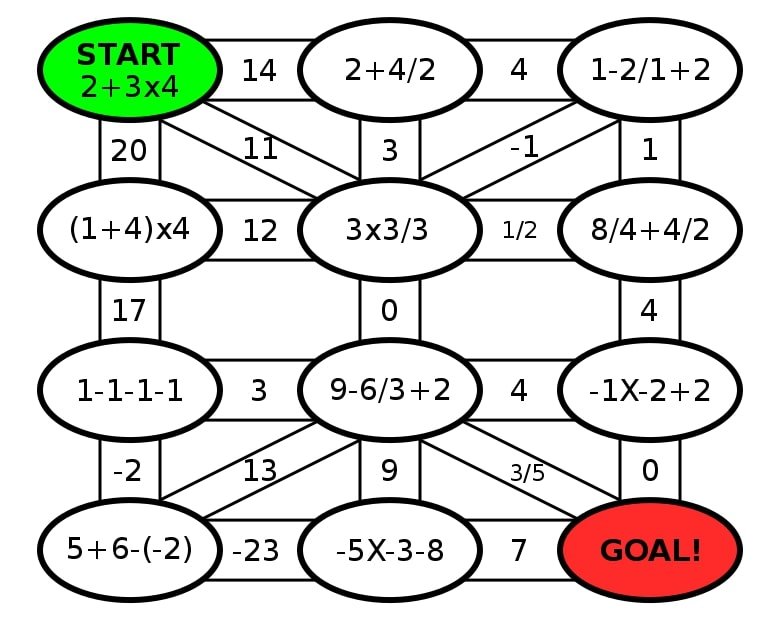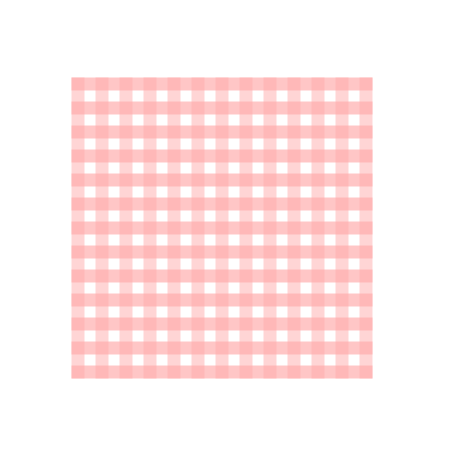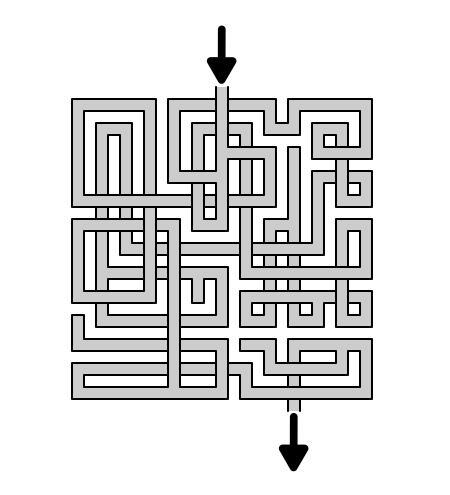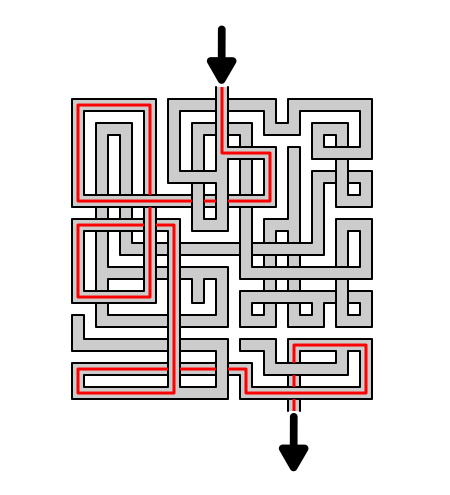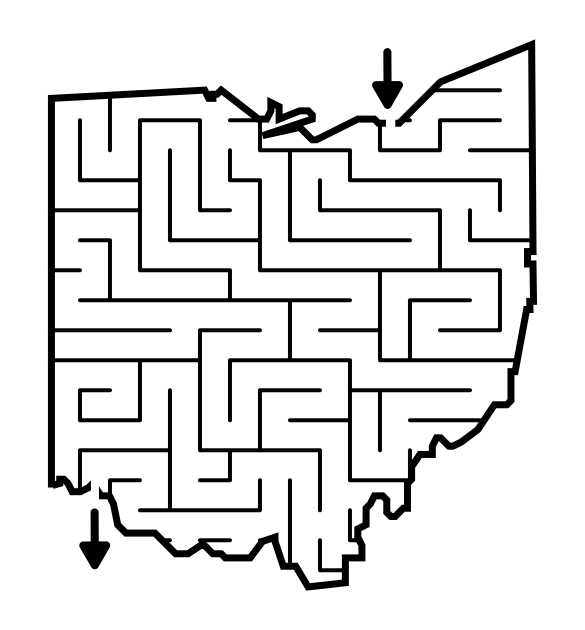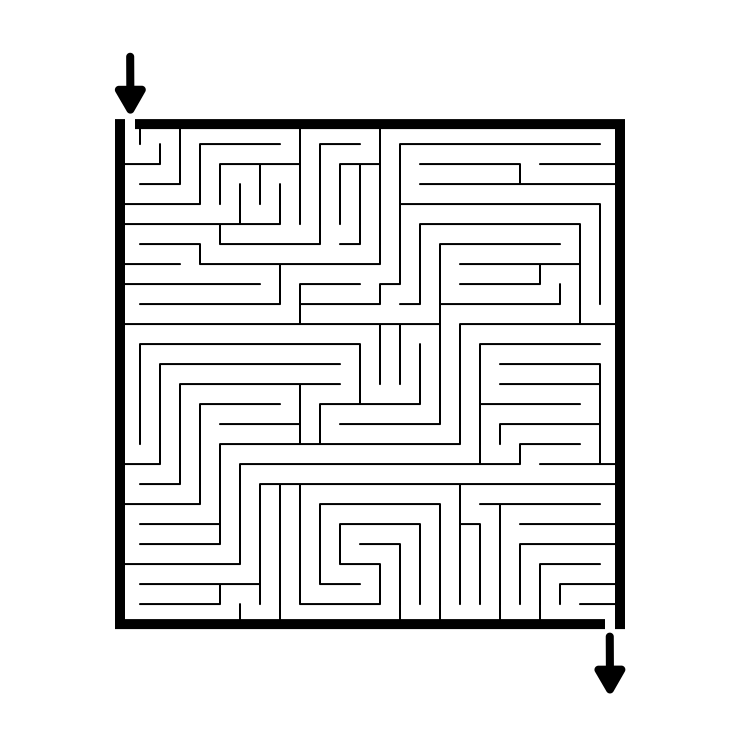In a series of posts I will show you how to make a maze in a wide variety of design constructions. The 41st type of maze construction is the Racing Maze. While most constructions are about the making of the specific maze, this one is more about the structure of the maze(s). Let’s define what I mean, then get into the example. At the end of the post I have added a free downloadable maze race book featuring 30 printable maze races !
Racing Maze - A Maze made specifically for racing between two people. The winner is the person that reaches the common goal first.
How to Make a Racing Maze
Before getting into the steps let’s talk about some guidelines for a good racing maze.
It is contained on one piece of paper (and preferably a large one) .
It consists of identical mazes, one on each side of the page which both end at the goal in the center of the paper. An Escape maze is not the best type for a race (though possible) since the multi-goal option is taken away by the common ending.
The maze type should be able to be solved with a writing utensil (to prove the solve has been done). So a maze like an arrow maze would not work easily. Block Move and Warp mazes can also be problematic. If you take a wrong warp an eraser will be needed.
Consider the difficulty you want for the maze. Something too difficult will lower the tension that a more speedy maze will create.
Step 1 - Draw Half of the Maze
I have crammed multiple steps into this because you can use multiple different types of maze constructions, each with its own steps. The key is the maze is drawn to fit on slightly less than half the page. It should start at the bottom of the page and end it the center of the page. You may notice the large gap in the example below….that’s it !
Step 2 - Copy and Invert the Maze
Copy the maze you have made and paste it on the top of the page inverted so it faces the opposite direction. This will create 2 identical mazes on one sheet of paper, with each one facing a person sitting across from the other. You will most likely need to adjust the original placement as everything gets centered !
Step 3 - Add final touches
In my example I tag the sides with my website and the name of the maze (or type). I do this because Racing always reminds me of race cars and how they are filled with brand logos. I think this would actually look even better with MORE logos.
Step 4 - Create the Solution (optional)
My guess is that based on the small size and multiple solvers, nobody will be needing a solution, but feel free to create one if you believe it will be needed.
So, you made a racing maze, but do you know the rules and options for the race ? I have it covered and you can find all the information HERE !
Free Downloadable Maze Race Book
THE MAZE RACING BOOK
30 pages, 30 Racing mazes
File Size: 365 KB
Features daily mazes from January 2021. Each racing maze is meant to be solved competitively by 2 people starting at the same time. These are mostly easy mazes with a few weaving mazes at the end a bit harder. To learn about race rules To learn about maze racing rules check out this post.
Step by step instructions on How to Draw over 40 different Digital Mazes.
Step by step instructions on How to Draw over a dozen different Digital Labyrinths.





